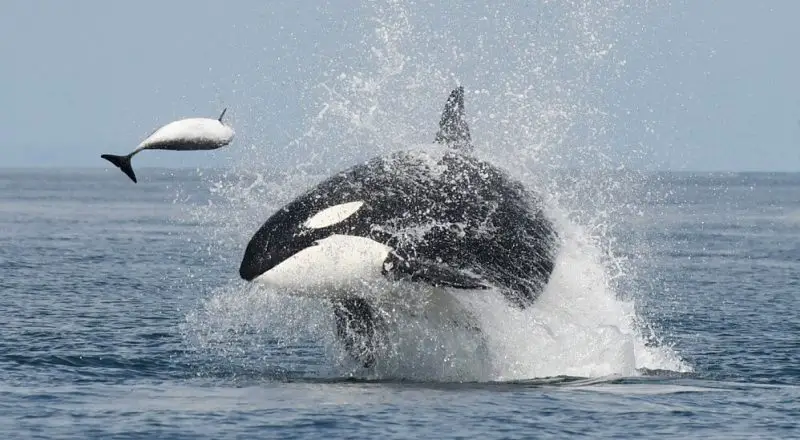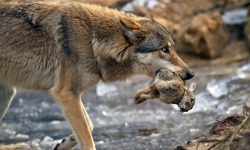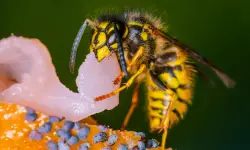Whales are fascinating marine mammals that have captured human imagination for centuries. From the gentle, plankton-feeding blue whale to the fierce, intelligent orca, their diets are as diverse as their habitats. Understanding what whales eat reveals not just their biology but also their importance in maintaining the balance of ocean ecosystems.
These ocean giants have evolved incredible adaptations to consume vast amounts of food efficiently. Some species filter tiny organisms by the ton, while others hunt massive prey with speed and strategy. Every feeding behavior reflects millions of years of evolution, fine-tuned to survive in the open sea.
By exploring what whales eat, we uncover a world of feeding habits as extraordinary as the creatures themselves — from microscopic plankton to powerful seals — and learn how each meal shapes the rhythm of life beneath the waves.
Understanding the Whale Diet

Baleen Whales vs. Toothed Whales
Whales are divided into two major groups: baleen whales and toothed whales, each with unique feeding strategies. Baleen whales, such as blue, humpback, and gray whales, have comb-like plates called baleen that allow them to filter small organisms like krill and plankton from seawater.
Toothed whales — including orcas, sperm whales, and dolphins — have teeth designed for gripping and tearing prey. They hunt larger, more active animals such as fish, squid, and seals.
This distinction defines not only their diet but also how they interact with their environment and other marine life.
How Whales Hunt and Feed
Feeding techniques vary widely among whale species. Baleen whales use lunge feeding, where they engulf huge volumes of water and filter out prey. Some humpbacks use bubble-net feeding, working together to corral schools of fish into tight circles.
Toothed whales, on the other hand, rely on echolocation — emitting high-frequency sounds to locate and track prey even in complete darkness. Orcas, the ocean’s apex predators, hunt cooperatively in pods with tactics as sophisticated as those of wolves.
The Role of Diet in Whale Survival
Whales consume enormous quantities of food daily to maintain their size and energy needs. A blue whale, for instance, can eat up to 4 tons of krill per day during feeding season. These feeding frenzies build fat reserves, or blubber, which sustain them through migration and breeding seasons.
Their diets also have global effects — whale feeding and waste help circulate nutrients that sustain plankton growth, supporting the entire oceanic food web.
20 Foods Whales Love the Most
1. Krill
Krill are tiny shrimp-like crustaceans that form the foundation of many baleen whales’ diets. Blue, fin, and minke whales rely heavily on dense krill swarms for sustenance.
Using baleen plates, these whales filter millions of krill at once, swallowing vast mouthfuls of seawater and expelling it through their baleen to trap the tiny creatures.
Krill are rich in protein and omega-3 fatty acids, providing whales with concentrated energy essential for their massive size.
2. Plankton
Plankton includes microscopic organisms — both plants (phytoplankton) and animals (zooplankton) — that drift in ocean currents. Many whales, particularly the largest species, feed directly or indirectly on these minute organisms.
Gray whales and right whales filter plankton while skimming the water’s surface or sea floor.
This simple diet forms the base of marine ecosystems, fueling the ocean’s largest creatures through the smallest life forms.
3. Small Fish
Small schooling fish such as anchovies, sardines, herring, and mackerel are key foods for humpback and Bryde’s whales. They are abundant, nutrient-rich, and easy to corral.
Whales coordinate feeding with bubble nets or tail slaps to herd fish into dense groups before lunging through them with mouths agape.
Each feeding session can capture thousands of fish, providing quick bursts of energy for migration and reproduction.
4. Squid
Squid are a favorite for many toothed whales, including sperm whales and pilot whales. These cephalopods are protein-dense and easy to digest.
Sperm whales dive to depths exceeding 3,000 feet to hunt giant squid using echolocation. They use suction and sharp teeth to capture and swallow them whole.
Squid make up a large part of the diet for deep-diving species, sustaining them in dark, cold ocean layers.
5. Octopus
Some toothed whales, such as false killer whales and Risso’s dolphins, also eat octopuses. These prey items are slippery and agile, demanding exceptional hunting skills.
Whales use speed and precision to seize octopuses before they can retreat into rocky crevices.
Octopus meat provides rich nutrition, especially in regions where fish are less abundant.
6. Shrimp
In addition to krill, other shrimp species form part of many whales’ diets. They live in both coastal and deep-sea habitats, offering a steady protein supply.
Gray whales feed on benthic shrimp by sucking up sediment from the seafloor and straining out the creatures through their baleen.
These small crustaceans help supplement the whale’s energy needs during migration.
7. Crustaceans
Beyond krill and shrimp, whales also consume copepods, amphipods, and other tiny crustaceans. These animals are plentiful in polar and subpolar waters where baleen whales thrive.
Whales scoop them up in massive gulps, filtering thousands at once.
Such feeding efficiency allows whales to gain tremendous weight during summer feeding seasons.
8. Jellyfish
Certain whale species, especially smaller baleen whales, occasionally eat jellyfish when other food sources are low. The gelatinous bodies provide hydration and minimal calories.
Although not a primary food, jellyfish offer a fallback diet in warm or nutrient-poor waters.
Their presence in whale stomachs shows the adaptability of these mammals in changing ocean environments.
9. Crabs
Some whales, particularly gray whales, feed on small crabs that live in shallow coastal waters. They scoop mud from the seabed and filter out the crabs along with other small invertebrates.
This bottom-feeding technique is unique among baleen whales.
Crabs provide minerals and protein, enhancing the whale’s nutritional balance during migration.
10. Seals
Killer whales (orcas) are apex predators and often hunt seals. They work cooperatively to isolate individuals resting on ice floes or swimming near the surface.
Their hunting strategy is intelligent and coordinated, involving distraction, teamwork, and patience.
Seal meat is rich in fat and protein, supplying essential energy for orcas living in frigid waters.
11. Penguins
In Antarctica, orcas also prey on penguins. They ambush the birds in open water or as they leap from ice edges.
Penguins’ fatty composition makes them a valuable meal in cold regions where high-calorie food is vital.
Though not a staple, penguins add diversity to the diet of these opportunistic hunters.
12. Dolphins
Some orca pods have been observed hunting dolphins, using high-speed chases and coordinated attacks. While rare, such predation demonstrates their apex status.
These hunts are strategic, with orcas surrounding and isolating their prey before striking.
Dolphin meat provides a dense source of energy, though it’s not a regular dietary choice for most whales.
13. Rays
Certain toothed whales, such as false killer whales, occasionally feed on rays and skates. These slow-moving fish are easy to ambush near the ocean floor.
Their fleshy bodies provide protein and fat, making them worthwhile targets in tropical waters.
This diet showcases the versatility of whale feeding habits in diverse habitats.
14. Tuna and Large Fish
Large predatory fish like tuna and salmon are prized by orcas. They hunt them using teamwork and incredible bursts of speed.
By herding schools of tuna together, they can pick off individual fish with precision.
These hunts highlight the orca’s intelligence, cooperation, and dominance as top ocean predators.
15. Squat Lobsters
Squat lobsters are small crustaceans found on the seabed. Gray whales and humpbacks occasionally consume them along with sediment-dwelling prey.
Whales stir up the seafloor with suction feeding, filtering lobsters and other benthic organisms through their baleen.
Though tiny, these creatures add diversity to the whale’s bottom-feeding diet.
16. Eels
Some toothed whales include eels in their diet, catching them as they slither through reefs or sand beds. Eels’ oily texture provides energy and hydration.
Orcas and smaller whale species occasionally hunt them during coastal feeding trips.
Eels highlight the whale’s ability to exploit nearly every prey type available in its habitat.
17. Sea Lions
Large orcas often target sea lions in coordinated hunts. They use waves, deception, and teamwork to knock them from rocks or ice into the sea.
This predatory behavior requires intelligence and precision, hallmarks of orca hunting culture.
Sea lions’ fatty meat is perfect for maintaining body warmth in icy waters.
18. Squid Eggs and Larvae
During spawning seasons, whales may feed on squid eggs and larvae floating near the surface. These delicate morsels provide protein and trace minerals.
Feeding on eggs allows whales to take advantage of temporary food abundance.
This opportunistic feeding behavior reflects the adaptability that helps whales survive shifting ocean cycles.
19. Dead Fish and Carrion
Whales sometimes scavenge fish carcasses or dead marine animals. This behavior, while uncommon, provides easy calories with minimal effort.
Scavenging helps recycle nutrients in the ocean, much like land-based scavengers.
It’s especially useful for older or weakened whales unable to hunt actively.
20. Plankton Blooms (Microfauna Mix)
When plankton blooms occur, whales consume mixed clouds of microorganisms — a blend of krill, copepods, larvae, and microfauna.
These dense feeding zones offer extraordinary nutrition and sustain baleen whales for months.
By following plankton blooms across oceans, whales align their migration routes with the planet’s biological rhythms.
FAQs About What Whales Eat
Do All Whales Eat the Same Thing?
No. Baleen whales filter small organisms like krill, while toothed whales hunt fish, squid, and marine mammals.
How Much Food Does a Whale Eat in a Day?
Large baleen whales can consume up to four tons of krill daily during feeding season.
Do Whales Eat Humans?
No. Whales do not prey on humans; even large toothed species have diets limited to marine animals.
How Do Whales Hunt?
Toothed whales use echolocation to detect prey, while baleen whales use lunge or filter feeding techniques.
Do Whales Eat Sharks?
Yes, orcas sometimes hunt small or medium-sized sharks, including great whites, using coordinated attacks.
Why Do Whales Eat Krill?
Krill are abundant, high in protein, and provide efficient energy for massive whales like the blue whale.
Do Whales Chew Their Food?
No. Whales either swallow prey whole or filter small organisms; they lack chewing teeth.
What Do Baby Whales Eat?
Calves nurse on rich, fatty milk from their mothers until they are ready to transition to solid food.
Can Whales Eat Plastic?
Unfortunately, whales sometimes ingest plastic by accident while feeding, which can cause severe harm.
Are Whales Carnivores or Herbivores?
Whales are carnivorous or filter-feeding omnivores, depending on species, but all rely on animal-based nutrition.
Final Thoughts
Whales are true marvels of the ocean, shaped by millions of years of evolution to master every feeding niche imaginable. From the colossal blue whale filtering clouds of krill to the cunning orca hunting seals with precision, each species plays a vital role in the ocean’s delicate balance.
Their diets sustain not only themselves but entire ecosystems, redistributing nutrients that fuel plankton growth and marine biodiversity. By understanding what whales eat, we appreciate how every feeding act — every gulp of krill, every hunt, every migration — contributes to the rhythm of life beneath the waves.
Protecting these magnificent creatures means protecting the ocean that feeds them, ensuring their songs and migrations continue to inspire generations to come.






